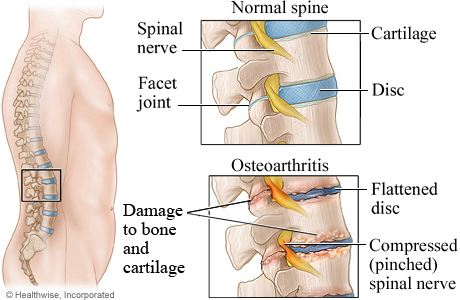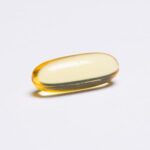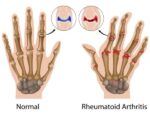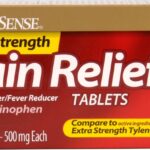The name arthritis refers to a not only one disease, but to a whole grouping of over 100 different forms of a disease.
It is an umbrella term used to refer to all conditions that affect the musculoskeletal system when in actual fact, each individual variation of the disease has its own name.
Despite being over 100 variations of arthritis, these are only those types of the disease that are known, there is a possibility that there are many more forms out there. Within the grouping, there are three particular types of arthritis that are common and these include rheumatoid arthritis, gouty arthritis and osteoarthritis.
What is Osteoarthritis?
Osteoarthritis is recognized by doctors as the most common type of arthritis in patients. It is caused by the wearing down of cartilage in the joints. As time passes, cartilage can end up being worn down completely. Osteoarthritis is a type of arthritis that can affect almost any joint of the body but it is most often found affecting hips, knees, hands and spine.
Despite osteoarthritis being thought of as a non-inflammatory form of arthritis (which means that it doesn’t cause inflammation of joints or muscles within the body), this is actually not entirely true and although there is no swelling or inflammation at the early stages of the condition, it can develop into inflammation if the disease is allowed to progress. This is true in most cases of osteoarthritis.
How many Methods Used to Treat Osteoarthritis ?
There’s no cure for OA, but there are a lot of treatment options you can try.
1. Physical Activity
Even though you may not feel like doing it, exercise is the best thing you can do to relieve arthritis pain and lessen joint damage. Exercise can also help you lose weight. That will put less stress on your joints. You should try to get exercise in these three categories:
Stretching: These are exercises to increase your flexibility and range of motion and lubricate your joints. Your doctor may prescribe specific stretching exercises. Yoga, Pilates, and Tai Chi classes are other good ways to get your stretching in.
Aerobics: These exercises will strengthen your heart and lungs, cut down on fatigue, and increase your stamina. You will also burn a lot of calories. Typical aerobic exercises include walking, running, riding a bicycle, swimming, or using a treadmill.
The Arthritis Foundation says the two best exercises for people with arthritis are walking and water aerobics. Both are easy on the joints and good for those who are overweight or just starting to exercise. They improve heart health and physical conditioning. You don’t need to know how to swim to do water aerobics. They’re done in a swimming pool in shoulder-height water.
2. Lose Weight
Obesity can cause arthritis. It puts a lot of stress on your hips, back, and knees. But even if you’re only moderately overweight, you’ll still benefit if you shed some pounds. A diet that’s rich in fresh fruits, vegetables, and whole foods can help boost your immune system and your overall health. There’s some evidence that dietary choices can affect people with both RA and OA.
A plant-based diet provides antioxidants, which can help reduce inflammation by eliminating free radicals from the body. On the other hand, a diet rich in red meat, processed foods, saturated fat, and added sugar and salt may aggravate inflammation, which is a characteristic of arthritis.
These foods can also contribute to other health conditions, including obesity, high cholesterol, high blood pressure, heart disease, and other complications, so they’re likely not beneficial for people with arthritis. Current OA guidelines do not recommend taking vitamin D or fish oil supplements as a treatment, but consuming foods containing these nutrients as part of a balanced diet may contribute to overall well-being.
3. Medicine for Treating Osteoarthritis
There are a number of medications that are good for arthritis pain. Talk with your doctor before starting any of them. Common over-the-counter medications are aspirin, ibuprofen, and naproxen. Prescription medications include oxycodone and hydrocodone.
Another option is a corticosteroid injection at the site of your joint pain. This is normally only given if the pain is very severe.
Nonsteroidal anti-inflammatory drugs (NSAIDs) treat pain. They also help to prevent painful inflammation and joint damage. They’re the top choice of treatment for OA because they’re effective and nonsedating.
NSAIDs come in oral and topical forms. There are many options, and some are available over the counter.
Your doctor will likely tell you to start with OTC NSAIDs. If those don’t work, your doctor may start you on a prescription NSAID.
NSAIDs come with risks, even the OTC versions.
Side effects can include:
- stomach irritation, erosion, or ulcers (this can lead to stomach bleeding and death)
- kidney problems
If you have kidney disease, ask your doctor if NSAIDs are safe for you.
If you’re allergic to aspirin, you shouldn’t take NSAIDs.
Don’t take NSAIDs long term without talking with your doctor. Your doctor will monitor you during your treatment.
Examples of NSAIDs include:
Aspirin
Aspirin is an OTC NSAID that treats pain and inflammation. It can help treat your OA symptoms to enhance your quality of life.
Ibuprofen (Advil, Motrin, IBU-Tab)
Ibuprofen (Advil, Motrin, IBU-Tab) is an NSAID available in both OTC and prescription strengths. Taking ibuprofen long term isn’t recommended because of the risk of stomach bleeding and heart attack.
The Food and Drug Administration (FDA)Trusted Source recommends taking the smallest dose that works for you and only taking it for up to 10 days. You shouldn’t take ibuprofen for longer than 10 days unless your doctor tells you to.
Naproxen (Naprosyn) and naproxen sodium (Aleve)
Naproxen (Naprosyn) and naproxen sodium (Aleve) are used to treat OA pain and inflammation.
Naproxen is only available by prescription. Naproxen sodium is available over the counter, and higher doses are also available in prescription forms.
Some side effects of naproxen and naproxen sodium include:
- heartburn
- stomach pain
- nausea
- diarrhea
- headaches
- dizziness
- drowsiness
Diclofenac (Zipsor, Voltaren) and diclofenac-misoprostol (Arthrotec)
Diclofenac (Zipsor, Voltaren) is an NSAID that comes in both oral and topical forms.
The oral drug Zipsor is available by prescription, while the topical drug Voltaren is available over the counter.
The oral drug diclofenac-misoprostol (Arthrotec) combines diclofenac with a drug that protects against stomach ulcers.
Diclofenac can cause side effects, which include:
- stomach pain
- diarrhea
- nausea
Other prescription NSAIDs for OA
These prescription NSAIDs are approved to treat the symptoms of OA:
An analgesic is another type of pain medication. Unlike NSAIDs, analgesics don’t treat inflammation.
This class of drugs works by blocking signals in your body that produce pain.
Examples of analgesics include:
Acetaminophen (Tylenol)
Acetaminophen (Tylenol) is an OTC analgesic. You take it by mouth as a:
- gel capsule
- tablet
- liquid concentration
In 2011, the FDA set the maximum dosage for acetaminophen at 4,000 milligrams (mg) per day.
After the FDA made its announcement, McNeil Consumer Healthcare, the company that makes Tylenol, set its maximum daily dosage for acetaminophen at 3,000 mg.
It’s important to monitor your daily intake of acetaminophen. Taking high doses of acetaminophen for a long time can lead to liver damage or liver failure, which can be fatal.
Don’t drink more than three alcoholic beverages per day if you use this drug. Drinking more than the recommended amount can increase your risk for liver problems.
Duloxetine (Cymbalta)
Duloxetine (Cymbalta) is used to treat depression. However, it’s also used off-label to treat chronic pain due to OA.
Side effects include:
- fatigue
- nausea
- constipation
4. Natural Remedies for Treating Osteoarthritis
Some herbs and supplements (capsaicin, flaxseed, ginger, ginkgo, and turmeric) are said to be good for arthritis. But the most popular ones for pain relief are chondroitin sulfate and glucosamine. Both are made of compounds found in cartilage. They may help your body regenerate the cartilage on your joints, but evidence remains sketchy.
Studies have shown that they may provide modest pain relief and could be tried if you are unable to tolerate other pain medications. The American College of Rheumatology doesn’t currently recommend the use of chondroitin sulfate and glucosamine.
Other natural remedies include acupuncture, massage, heating pads, and ice packs. Reducing stress by maintaining a positive outlook may also help.
- Heat treatments can include taking a long, warm shower or bath in the morning to help ease stiffness and using an electric blanket or moist heating pad to reduce discomfort overnight.
- Cold treatments can help relieve joint pain, swelling, and inflammation. Wrap a gel ice pack or a bag of frozen vegetables in a towel and apply it to painful joints for quick relief. Never apply ice directly to the skin.
- Capsaicin, which comes from chili peppers, is a component of some topical ointments and creams that you can buy over the counter. These products provide warmth that can soothe joint pain.
5. Physical Therapy
Physical therapists can work with you on exercises to reduce pain and improve your range of motion. They can also help fit you with braces to support your joints or suggest shoe inserts that can also help to take the pressure off.
If you need additional help, scooters, walkers, and canes may be recommended to help you get around. Tools like jar openers and steering wheel grips can help you manage day-to-day life more easily when you have trouble gripping things. Your therapist can give you advice on how to use them.
6.Surgery
If you’ve tried a number of remedies and got no relief or only a temporary reprieve, your doctor may suggest surgery. Thy’ll talk with you about what makes sense for your situation.
Natural Food Remedies for Treating Osteoarthritis
Nutritional Supplements for Osteoarthritis
Glucosamine Sulfate
Pain Medications, Pain Relief, and Pain Management








